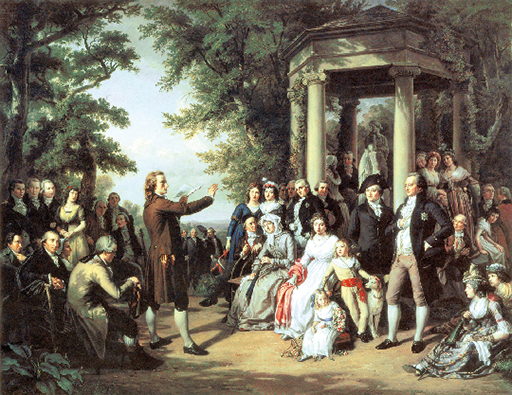Week 2: Culture and identity
Introduction
Culture, language and identity are closely intertwined, and this connection is especially relevant in intercultural communication. To begin, you’ll explore approaches to ‘identity’ which will become relevant again throughout this course. In the first activities you’re encouraged to reflect on your own identity, while finding out about the key identity types used in intercultural communication. Secondly, you’ll focus on national identity, as this is a type of identity that is often equated closely with culture. You’ll develop an understanding of how national identity is constructed and find out why the ‘culture as nation’ perspective can be tricky. Lastly, you’ll learn about the concepts of ‘othering’ and ‘belonging’. Othering often operates based on the aforementioned notion of culture as nation, and also enables discrimination based on other facets of culture and identity.
The concept of ‘identity’ is a relatively new, modern-day concept. Although nowadays we might use the term daily because the idea has manifested itself in the popular realm, a few hundred years ago the concept was widely unknown and a few philosophers theorised about the existence of identity. From a western perspective, the beginnings of assumptions that individuals have an identity lie in the Enlightenment movement and its push towards secularisation (the separation between state and religion) through human reason. Since then, significant thinkers such as Locke have changed our ideas of what an identity is and how it is shaped, and today disciplines like psychology and sociology still do not agree on the properties of an individual’s identity.
The disciplines of psychology and sociology are home to two dominant perspectives on identity that are relevant for this course. In the discipline of psychology, researchers focus on the individual and understand identity to be a result of one’s mental traits and dispositions. For psychologists, identity is ‘the property of persons’ (Côté, 2006); culture is about groupness (the feeling of being part of a group), and identity is, too. Sociologists on the other hand understand identity as relational, making it a ‘property of interactions’ (Côté, 2006).
This means that our sense of self is shaped by our interactions with others and that our language use also shows how we position ourselves in relation to others.
Box _unit3.1.1 Enlightenment
The Enlightenment was an intellectual movement in Europe during the 17th and 18th century. It was driven by the idea that every human possessed the power of reason which enabled them to analyse their environment and to create conditions for their own happiness. The Enlightenment’s notion of reason and humanity had a strong impact on politics, philosophy, science, art and religion. It for instance critiqued predominant forms of government, like the monarchy, and favoured democracy. People were also increasingly seen as individuals with their own agency, instead of simply being guided by divine destiny.
Box _unit3.1.2 John Locke (1632 – 1704)
John Locke was one of the first thinkers who was concerned with what constituted personal identity. He argued that people were born with an empty mind (‘tabula rasa’), and that one’s views and identity were formed through human consciousness and experiences. This stood in contrast to the then dominant Christian notion in which everyone was born sinful, and that one’s soul was one’s personal identity. He wrote down this perspective in the influential work An Essay Concerning Human Understanding.
Activity _unit3.1.1 Activity 1
Before moving on to the role of identity in intercultural communication, check whether the aforementioned explanations made sense to you. Below are two statements, one matches the approach that identity is a property of interactions, and the other that identity is a property of persons. Drag and drop the example next to the idea of identity.
Two lists follow, match one item from the first with one item from the second. Each item can only be matched once. There are 2 items in each list.
-
Identity as a property of interaction
-
Identity as a property of persons
Match each of the previous list items with an item from the following list:
a.‘The fact that he praises even the most obvious lemons on display shows that he is a salesman first and foremost.’
b.‘Car salesmen are mostly male, as men are more naturally interested in cars.’
- 1 = a,
- 2 = b
Discussion
There is a subtle difference: When one’s identity stems from interactions with others, the professional identity of a car salesman emerges through the person’s behaviour, and if it is understood to be the property of a person, then the interaction does not shape it, but simply shows what kind of identity the car salesman had all along.


